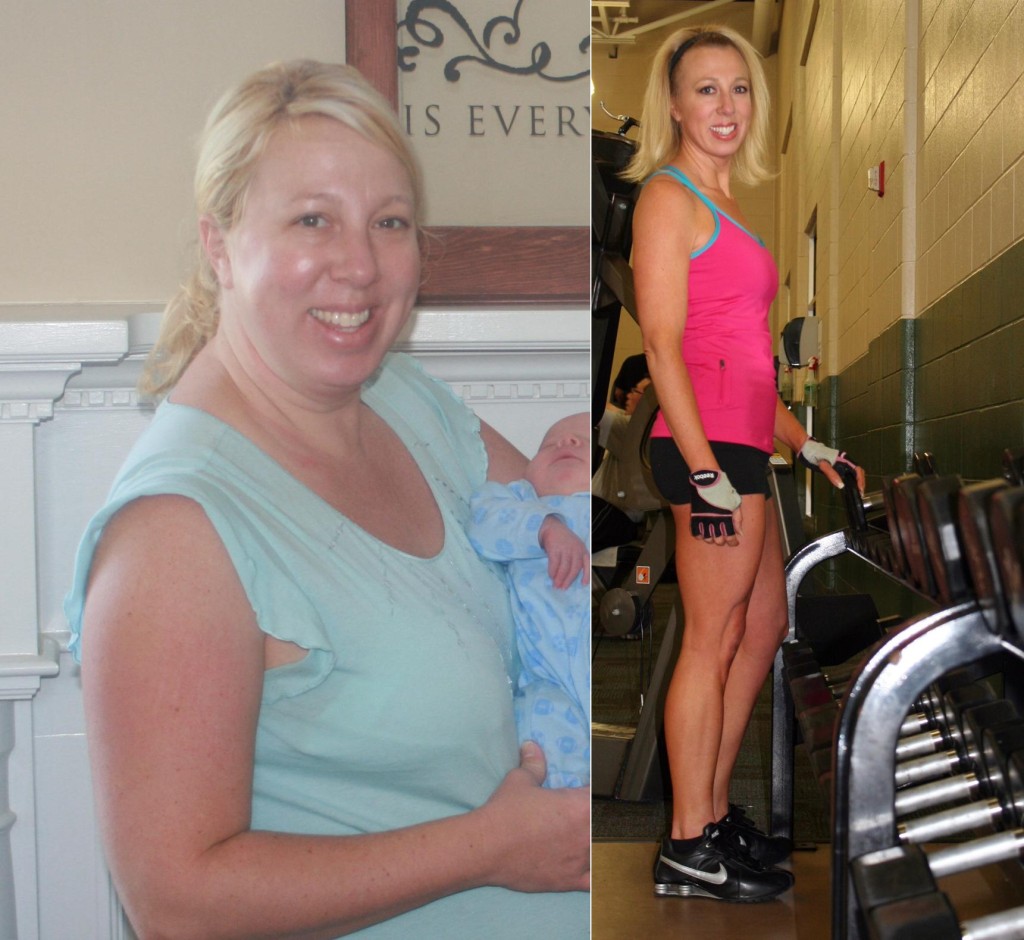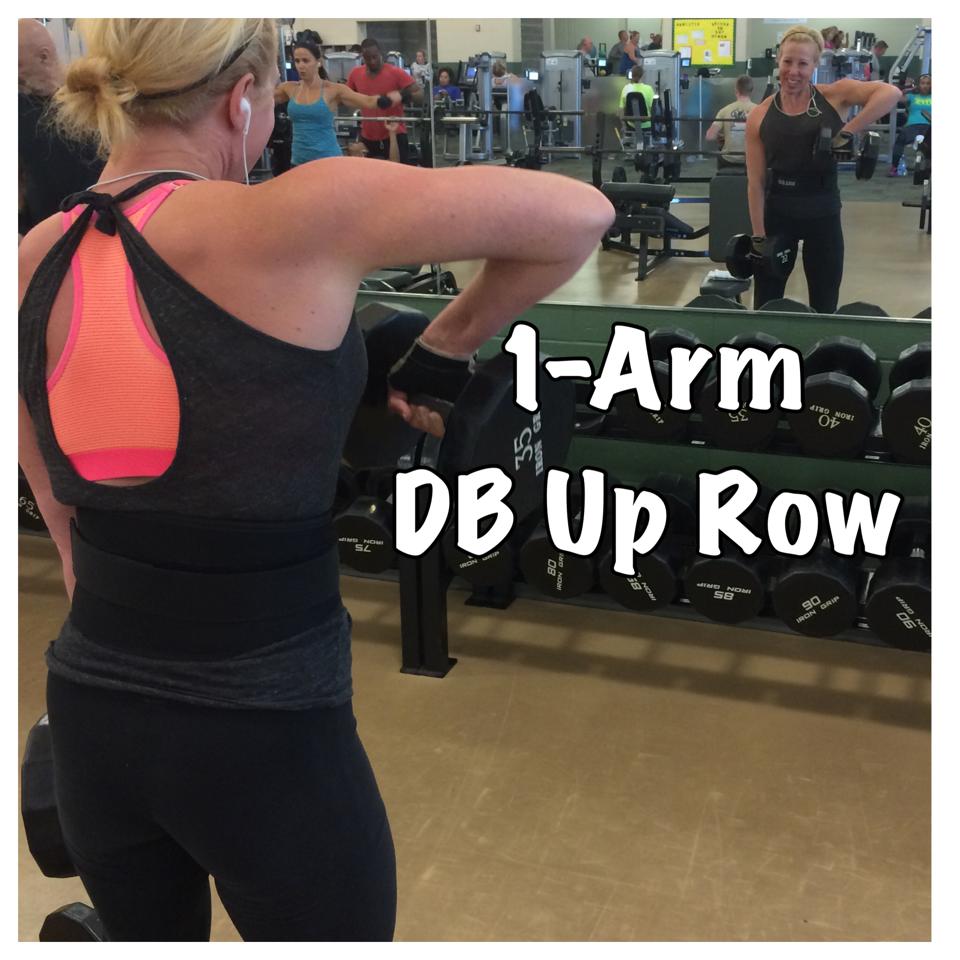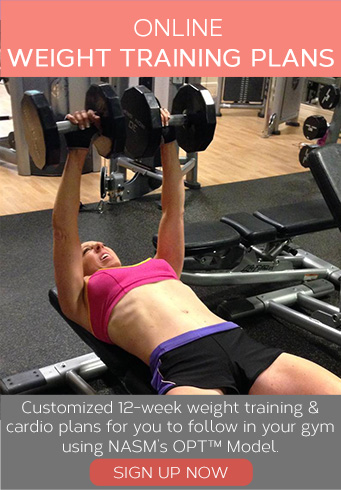-Mindy Irish
BS Physical Education; NASM CPT, YES; NPC Bikini Bodybuilder
I started lifting weights in 2011 after I was reluctantly pulled into a strength training class by my friend Shannon. I had been doing five cardio classes a week and it took the baby weight off after the birth of my fourth child in late 2009, but when I hit my goal weight on the scale at the end of 2010, I wanted lower body fat and more muscle definition. I remember saying, “I don’t want to just be skinny. For all the effort I put in, I want to look fit, like I workout!” I could not keep doing all the cardio and expect different results. At that point, I knew something in my methods had to change.
So, we started lifting weights in a group class at the Fishers Y once a week and honestly, I hated it. I remember saying, “This hurts.” Well, yes, it was uncomfortable, but I was not in pain! Eventually she dragged me into the weight room where all the guys were. “I can’t go in there. I don’t know what I’m doing. What will people think of me?” I asked her as she persuaded me to go. With her by my side, we explored the dumbbells, got under the plates on the Olympic bar in the squat rack, and pushed ourselves outside of our comfort zones.
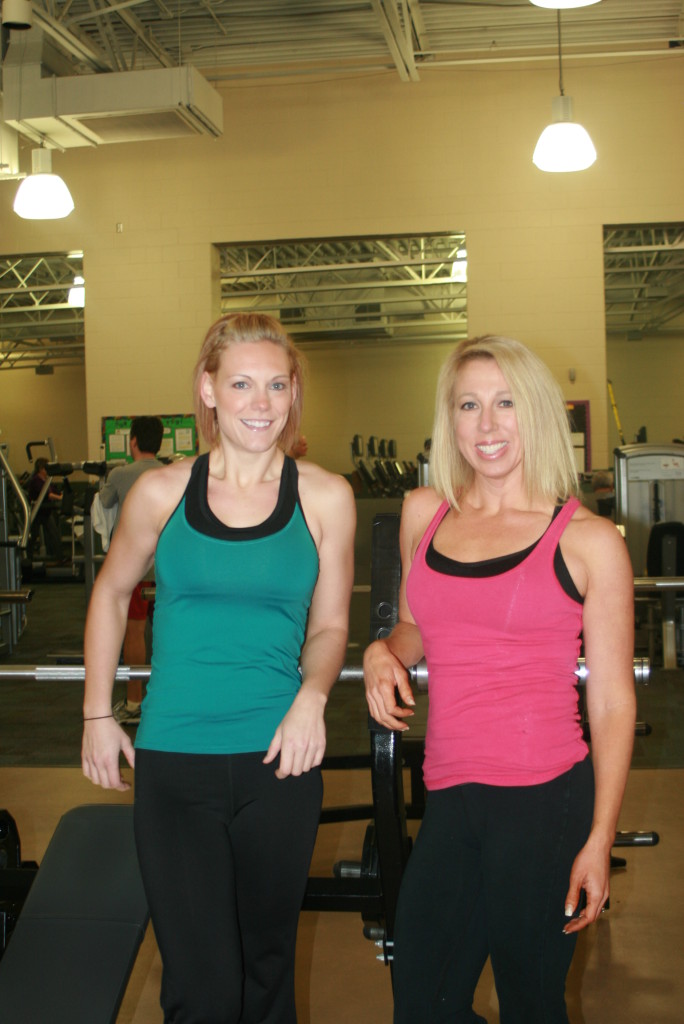
Shannon and I enjoying a lift date! Our kids were in child watch and we got our training in. Great memories there!
In early 2012, I applied for an online transformation contest and won! The prize earnings were $1000, so I used some of that money to take this strong interest to a new level and hired a personal trainer by the name of Jackie at the Fishers Y. I ended up working with her for an entire year and she helped prepare me for my first Figure competition in April of 2013. Most importantly, she taught me form, exposed me to new exercises, and helped me grow my confidence in myself to continue to be in the weight room in a place I originally knew nothing about. I no longer cared it was more guys than gals. In time, I vowed to change that!
I, like everyone else, had a Day one. I kept going back because I was seeing my body transform. I enjoyed the time in a quiet spot where it was just my music and me. I also realized I was getting the most bang for my workout buck. By adding muscle, I was adding shape. By adding muscle, I was changing my metabolism, especially at rest and in turn lowering my body fat. THESE were all my goals from the get go, but I started with what I only knew at the time, cardio. Thankfully I finally found the iron!
So if you want to see changes in your physique, lower body fat, add shape and definition to your build, and learn how to challenge yourself physically AND mentally, lifting weights IS the way to go. So how to get started? Here are some tips on how to take that next step into the strength training area at your gym.
Disclosure: I hold a BS in Physical Education from Indiana University and am a NASM Certified Personal Trainer (CPT) and Youth Exercise Specialist (YES). I hold no liability for anyone trying any exercise shown or listed, either at home or in the gym. Proceed at your own risk. There are many safety aspects to consider on this journey. First off, make sure your physician clears you for weight training activity. Secondly, this is a sloooowwww process. Don’t expect to undo 2, 5, 10+ years of inactivity in 6 weeks or even a year. This is a journey without a finish line. We want to evolve a new lifestyle for years to come. The more consistently you stay at it, the better results you will get, and the more you will enjoy the process and not just the act of chasing the results!
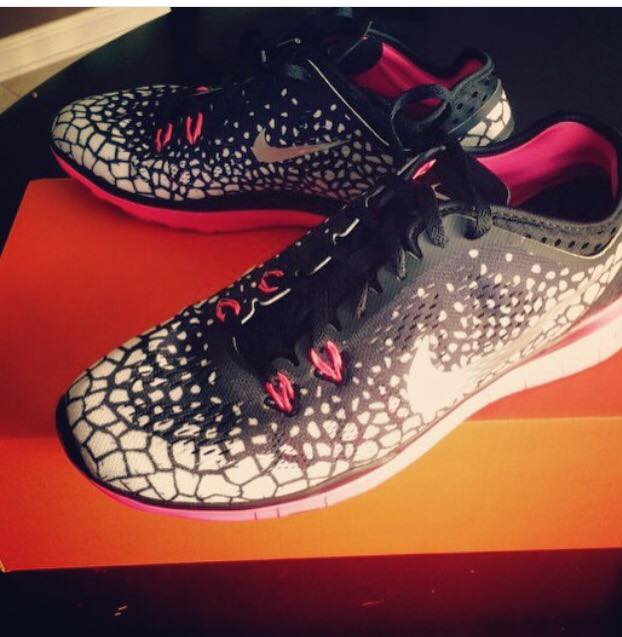
Nike Free 5.0; Found on Eastbay.com
STEP 1: Put your workouts in your calendar like you would a meeting or doctor’s appointment. Schedule a meeting with yourself and show up. I put this in the top place because I believe in systems. Systems produce results and if you can grasp the factor that what you do repeatedly over time evolves the compound effect, then you’ll see great progress. Vowing to be consistent is the key.
STEP 2: Have a great pair of lifting shoes. When I first started I used Nikes (seen in black in the top pic) that had some major air and cushion in them. These were running shoes! In time I learned that I needed a flat shoe that allowed me to grip the floor as I trained legs. For me, the less cushion the better. I have repeatedly used the Nike Free 5.0 series and I’m super impressed! Of course you can lift in what you currently own, but sometimes a new pair of kicks will get you in the groove to take on a new venture!
STEP 3: Explore the machines and cables first. Machines are a great transition to free weights. Some people are ready to jump right in to free weights, but most are not. Machines can be plate loaded or pin stacks where you move the pin to select your weight. Machines also give ideas of exercises and form on the actual machine. They will guide your range of motion and movement, making it great for all levels, but especially beginners in the weight room. The more comfortable you become with getting resistance on a machine or cable station, the more likely you’ll be able to explore into the free weights and barbells. Even many advanced lifters still use cables and machines, so don’t discount their involvement in your plan.
In time, most people will want to do 2-4 sets of an exercise with a range of 8, 12, or 15 repetitions for muscle endurance and hypertrophy (change in size). For starters, you may even want to do little to no weight on the machine for one set of 10-15 reps to understand what your body will be doing at that stop. That said, to facilitate the mind-muscle connection, I do that now as a warm-up before I begin working a new body part, so you’ll fit right in!
STEP 4: Have a plan. As a CPT, I write all types of lifting plans and strategies for my clients. If I were to start a client on a plan, I would choose a whole-body circuit. Bodybuilders and those a bit further down the road tend to do body-part splits where they only work say shoulders and back or just legs or arms and chest on a lifting day and then on the next training day they hit another body part grouping. For someone looking to begin with the weights, a whole-body approach is best with a lifting rest day in between each day you’re at the iron. You can put cardio on those lifting rest days and really get the most bang for your buck by separating the two.
Ideally, you’ll get the most response from your body with a lifting routine of two to five days a week and cardio will vary according to your goals and training availability. For me, I do three 30-minute steady state sessions a week right now because I like the mental unplug, the sweat, and the training for my heart muscle!
On a whole-body plan, you can do a one to three exercises for each body part and it might go in an order like this: glutes, back, legs, shoulders, glutes, chest, legs, arms, glute band work. (I consider the glute work part of the core and use that in substitute for doing abs.) Doing an upper and then lower exercise routine is called a peripheral style of training and gets the blood moving for a great workout due to activating your upper and lower extremities in alternation through the training.
Then within each body part you can vary the exercises as you plan for the week. For glutes there are bands, body weight, and weighted exercises. For back you can work the upper and lower back width as well as your muscle thickness with exercises like pull downs, rows, and pull-ups. Legs have exercises like lunges, squats, and hip thrusts, for quads, hamstrings, inner and outer thigh, and calves. In shoulders you want to hit the front delt, medial delt, and rear delt when planning your work. Front raises, lateral raises, overhead presses, and rear delt flys will hit those muscle groups.
Chest and arms can be considered secondary muscle groups because they get used as assistance to the prime movers in several of the exercises we’ve already listed, but many people still like to hit them individually. Presses, flys, curls, and kickbacks are examples of chest and arm exercises. I don’t promote or do much, if any, abdominal work for myself or clients because I get the most impact from compound exercises when working the core as a whole (hip thrusts, dead lifts, glute bridges, squats, hip hinges).
STEP 5: Invest in learning. You will be miles ahead if you pay for in-person demos or training from those who are qualified. Many gyms offer small group classes for weight training, semi-private personal training and of course 1:1 personal training sessions. Like I said, I spent a year with a personal trainer one to two times a week and then I trained on my own the other three days. Even giving yourself an entry-level package with a trainer will equip you for success down the road. Many gyms offer promo packages when you sign up, so make sure to look into the offerings.
Another way that I learned is by following quality people online. I myself put a ton of 15-second lifting demos up on my Instagram page and sometimes the same up on my fitness Facebook page. You can also search You Tube or Bodybuilding.com for great demos of many, many exercises. Overall, you’re going to have to do some leg work in this (literally, too!). No one is going to come to you and set it up for you.
Truly the best way is to use the suggested workout format I gave above, research a few exercises for each body part, and dive in. You won’t learn until you try. In time you will learn more, watch others in the gym, and you’ll be exposed to additional lifting strategies and ideas. You don’t need to be fully armed and all-knowing to start. You just need to have an open mind and willingness to learn as you go. What I know now is ten fold to what I knew when I started!
Additionally, I offer free workout ideas when you sign up for my monthly E-letter. Once you subscribe, you’ll receive a link to a download for body-part splits or whole body workout ideas that you can do at home or in the gym. This is a great place to start and gives you a baseline to launch.
If you can’t afford a trainer, I offer services for client-specific plans that come with one in-person demo hour at your gym OR for less of an investment, simply an online plan emailed to you, built for you and your goals. All in all, there are MANY options to get started, money invested or not.
STEP 6: Learn the lingo! This part can be overwhelming, but hopefully this will give you a start.
DB-Dumbbells; BB-Barbells; Cables; Machines; Plate; Bands
DL-Dead Lift; RDL-Romanian Dead Lift; Sumo-Sumo Dead Lift
Rack it-to put your weights away
Smith Machine, “The Smith”-a guided squat rack; The rack-squat rack
Set-The number of groups of an exercise; Reps-repetitions, the number of times you repeat an exercise in a set; Examples: 3×12 or 2×10 or 4×15; 3=set, 12=reps
Rest period-the recovery time between the sets;
Super Set: to do two back-to-back exercises, same or different body parts; Giant Set: 3 or more sets repeated one after the other without rest; Drop Set: to do an exercise with a heavy weight and repeat it immediately after with a lighter weight of the same number of sets
STEP 7: Establish accountability. Most people don’t start at this alone. Competitors like myself may have online coaches guiding them. Regular gym attenders may join small lifting groups or group exercise classes. Some people attend with a friend or family member who has a similar interest. If you prefer to do this solo, that is just fine as well, but it seems that those in their early stages who really progress and keep going have community in the weightlifting and gym arena. I train at Lifetime early AMs and if you make your way in in the morning, I’d be happy to show you some general moves and encourage you to keep going. There is progress in numbers!
STEP 8: Switch it up. We get bored really easily. It’s to your body and mindset’s benefit to change things up routinely. Some lift off the same plan for four, eight or 12 weeks. To periodize (make changes) and keep your body from adapting to your training, it is common to have a Plan A on Mondays, Plan B on Wednesdays, and Plan C on Fridays and then change each of those every four weeks. This is where your research and engagement into weightlifting comes in. As you progress further down the road, you’ll learn more advanced moves and strategies and the possibilities are endless.
In the beginning, don’t focus on how heavy you can go. Focus on form, the mind-muscle connection, and being consistent. I start people on body-weight exercises commonly so they get the form down first. Too many people try to get a PR on the first visit and burn out OR get injured. Ease into this. Work smarter, not harder!
STEP 9: Incorporate the package deal: rest, hydrate, nourish. Training is great, but it is not the total answer. If you spend two hours lifting and have no awareness of your diet, get minimal sleep and are dehydrated, you are your biggest challenge!
Diet does not have to be perfect (what is perfect?), but you do need to know how much you need to eat for your goals and have an awareness of what you’re actually eating. ( I’m sure I’ve written 20+ posts on this topic!). Hydration is key to your energy and muscle response to the training regimen. Sleep is where you repair and rebuild from the breakdown in the gym. Those with the greatest progress and physiques quite possibly sleep to their body’s ideal needs and they know exactly what those are (7-10 hours). Of course you cannot make changes to all this at one time, so take it slow and make sure to give each of these areas focus over time.
STEP 10: Be consistent. Science is powerful. The body is VERY smart and responsive to long-term efforts. Fast fixes and goals for quick results are fleeting. Vow to give this time and intention and vow to be consistent with your efforts. If you show up three times and then take three weeks off, you can’t blame the process for lack of progress. However, let the past go. Get back on track and #justkeepgoing. We each have a Day One, sometimes many of them!







